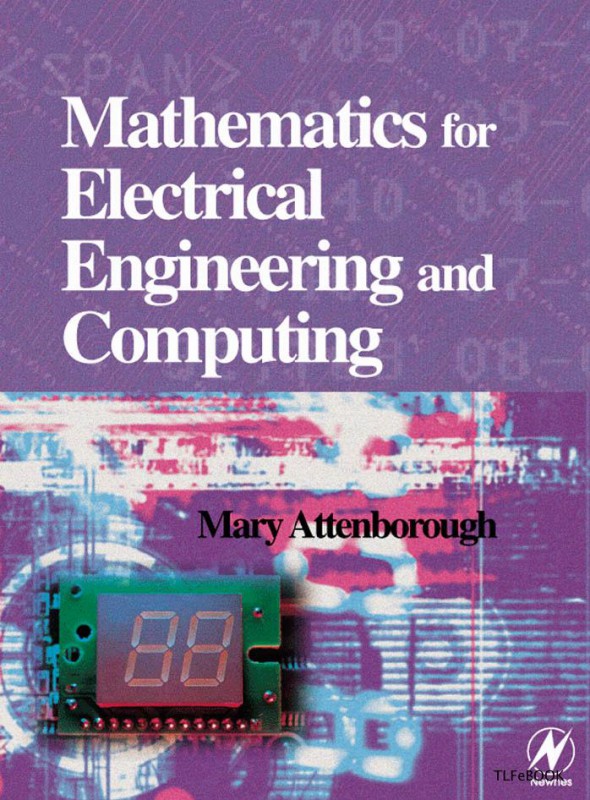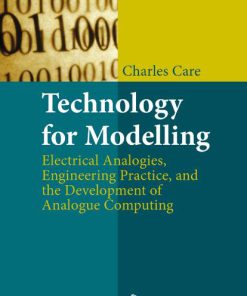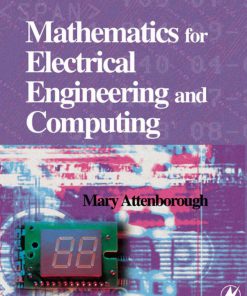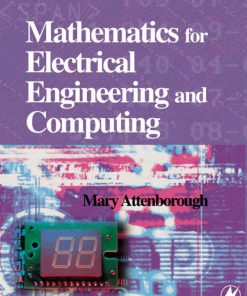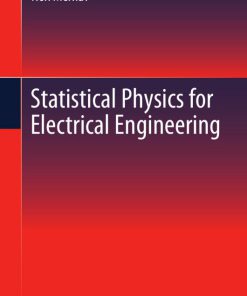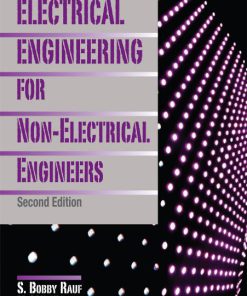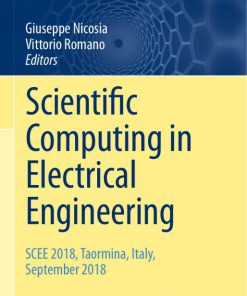(Ebook PDF) Mathematics for Electrical Engineering and Computing 1st edition by Mary Attenborough 0080473407 9780750658553 9780080473406 full chapters
$50.00 Original price was: $50.00.$25.00Current price is: $25.00.
Authors:E.H. Chi , Series:Electrical Engineering [137] , Author sort:Chi, E.H. , Languages:Languages:eng , Published:Published:Jan 2005 , Publisher:Newnes
Mathematics for Electrical Engineering and Computing 1st edition by Mary Attenborough – Ebook PDF Instant Download/DeliveryISBN: 0080473407, 9780750658553, 9780080473406
Full download Mathematics for Electrical Engineering and Computing 1st edition after payment.
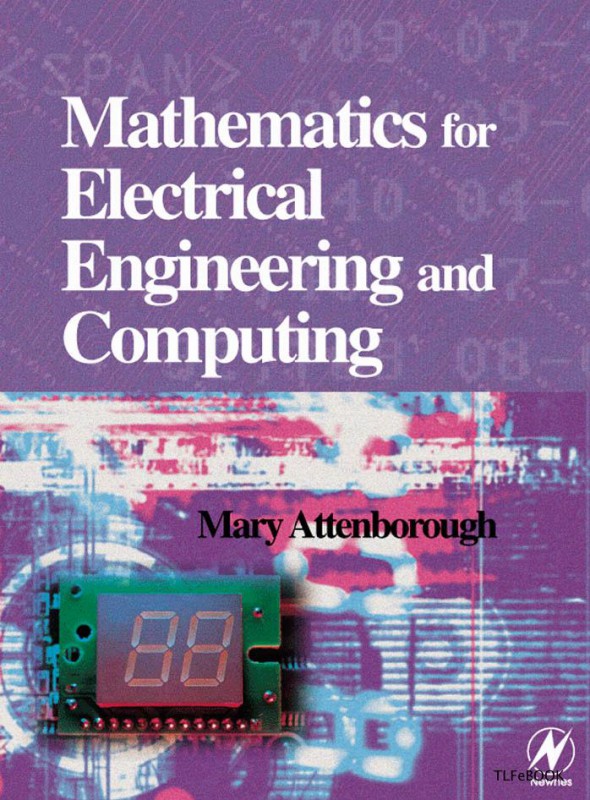
Product details:
ISBN-10 : 0080473407
ISBN-13 : 9780750658553 9780080473406
Author : Mary Attenborough
Mathematics for Electrical Engineering and Computing embraces many applications of modern mathematics, such as Boolean Algebra and Sets and Functions, and also teaches both discrete and continuous systems – particularly vital for Digital Signal Processing (DSP). In addition, as most modern engineers are required to study software, material suitable for Software Engineering – set theory, predicate and prepositional calculus, language and graph theory – is fully integrated into the book.
Excessive technical detail and language are avoided, recognising that the real requirement for practising engineers is the need to understand the applications of mathematics in everyday engineering contexts. Emphasis is given to an appreciation of the fundamental concepts behind the mathematics, for problem solving and undertaking critical analysis of results, whether using a calculator or a computer.
Mathematics for Electrical Engineering and Computing 1st Table of contents:
Part 1: Sets, functions, and calculus
1. Sets and functions
1.1 Introduction
1.2 Sets
1.3 Operations on sets
1.4 Relations and functions
1.5 Combining functions
1.6 Summary
1.7 Exercises
2. Functions and their graphs
2.1 Introduction
2.2 The straight line: y=mx+c
2.3 The quadratic function: y=ax²+bx+c
2.4 The function y=1/x
2.5 The functions y=ax
2.6 Graph sketching using simple transformations
2.7 The modulus function, y=|x| or y=abs(x)
2.8 Symmetry of functions and their graphs
2.9 Solving inequalities
2.10 Using graphs to find an expression for the function from experimental data
2.11 Summary
2.12 Exercises
3. Problem solving and the art of the convincing argument
3.1 Introduction
3.2 Describing a problem in mathematical language
3.3 Propositions and predicates
3.4 Operations on propositions and predicates
3.5 Equivalence
3.6 Implication
3.7 Making sweeping statements
3.8 Other applications of predicates
3.9 Summary
3.10 Exercises
4. Boolean algebra
4.1 Introduction
4.2 Algebra
4.3 Boolean algebras
4.4 Digital circuits
4.5 Summary
4.6 Exercises
5. Trigonometric functions and waves
5.1 Introduction
5.2 Trigonometric functions and radians
5.3 Graphs and important properties
5.4 Wave functions of time and distance
5.5 Trigonometric identities
5.6 Superposition
5.7 Inverse trigonometric functions
5.8 Solving the trigonometric equations sin x=1, cos x=a, tan x=a
5.9 Summary
5.10 Exercises
6. Differentiation
6.1 Introduction
6.2 The average rate of change and the gradient of a chord
6.3 The derivative function
6.4 Some common derivatives
6.5 Finding the derivative of combinations of functions
6.6 Applications of differentiation
6.7 Summary
6.9 Exercises
7. Integration
7.1 Introduction
7.2 Integration
7.3 Finding integrals
7.4 Applications of integration
7.5 The definite integral
7.6 The mean value and r.m.s. value
7.7 Numerical Methods of Integration
7.8 Summary
7.9 Exercises
8. The exponential function
8.1 Introduction
8.2 Exponential growth and decay
8.3 The exponential function y=et
8.4 The hyperbolic functions
8.5 More differentiation and integration
8.6 Summary
8.7 Exercises
9. Vectors
9.1 Introduction
9.2 Vectors and vector quantities
9.3 Addition and subtraction of vectors
9.4 Magnitude and direction of a 2D vector „ polar co-ordinates
9.5 Application of vectors to represent waves (phasors)
9.6 Multiplication of a vector by a scalar and unit vectors
9.7 Basis vectors
9.8 Products of vectors
9.9 Vector equation of a line
9.10 Summary
9.12 Exercises
10. Complex numbers
10.1 Introduction
10.2 Phasor rotation by π/2
10.3 Complex numbers and operations
10.4 Solution of quadratic equations
10.5 Polar form of a complex number
10.6 Applications of complex numbers to AC linear circuits
10.7 Circular motion
10.8 The importance of being exponential
10.9 Summary
10.10 Exercises
11. Maxima and minima and sketching functions
11.1 Introduction
11.2 Stationary points, local maxima and minima
11.3 Graph sketching by analysing the function behaviour
11.4 Summary
11.5 Exercises
12. Sequences and series
12.1 Introduction
12.2 Sequences and series definitions
12.3 Arithmetic progression
12.4 Geometric progression
12.5 Pascal’s triangle and the binomial series
12.6 Power series
12.7 Limits and convergence
12.8 Newton–Raphson method for solving equations
12.9 Summary
12.10 Exercises
Part 2: Systems
13. Systems of linear equations, matrices, and determinants
13.1 Introduction
13.2 Matrices
13.3 Transformations
13.4 Systems of equations
13.5 Gauss elimination
13.6 The inverse and determinant of a 3 x 3 matrix
13.7 Eigenvectors and eigenvalues
13.8 Least squares data fitting
13.9 Summary
13.10 Exercises
14. Differential equations and difference equations
14.1 Introduction
14.2 Modelling simple systems
14.3 Ordinary differential equations
14.4 Solving first-order LTI systems
14.5 Solution of a second-order LTI systems
14.6 Solving systems of differential equations
14.7 Difference equations
14.8 Summary
14.9 Exercises
15. Laplace and z transforms
15.1 Introduction
15.2 The Laplace transform „ definition
15.3 The unit step function and the (impulse) delta function
15.4 Laplace transforms of simple functions and properties of the transform
15.5 Solving linear differential equations with constant coefficients
15.6 Laplace transforms and systems theory
15.7 z transforms
15.8 Solving linear difference equations with constant coefficients using z tranforms
15.9 z transforms and systems theory
15.10 Summary
15.11 Exercises
16. Fourier series
16.1 Introduction
16.2 Periodic Functions
16.3 Sine and cosine series
16.4 Fourier series of symmetric periodic functions
16.5 Amplitude and phase representation of a Fourier series
16.6 Fourier series in complex form
16.7 Summary
16.8 Exercises
Part 3: Functions of more than one variable
17. Function of more than one variable
17.1 Introduction
17.2 Functions of two variables „ surfaces
17.3 Partial differentiation
17.4 Changing variables „ the chain rule
17.5 The total derivative along a path
17.6 Higher-order partial derivatives
17.7 Summary
17.8 Exercises
18. Vector calculus
18.1 Introduction
18.2 The gradient of a scalar field
18.3 Differentiating vector fields
18.4 The scalar line integral
18.5 Surface integrals
18.6 Summary
18.7 Exercises
Part 4: Graph and language theory
19. Graph theory
19.1 Introduction
19.2 Definitions
19.3 Matrix representation of a graph
19.4 Trees
19.5 The shortest path problem
19.6 Networks and maximum flow
19.7 State transition diagrams
19.8 Summary
19.9 Exercises
20. Language theory
20.1 Introduction
20.2 Languages and grammars
20.3 Derivations and derivation trees
20.4 Extended Backus-Naur Form (EBNF)
20.5 Extensible markup language (XML)
20.6 Summary
20.7 Exercises
Part 5: Probability and statistics
21. Probability and statistics
21.1 Introduction
21.2 Population and sample, representation of data, mean, variance and standard deviation
21.3 Random systems and probability
21.4 Addition law of probability
21.5 Repeated trials, outcomes, and probabilities
21.6 Repeated trials and probability trees
21.7 Conditional probability and probability trees
21.8 Application of the probability laws to the probability of failure of an electrical circuit
21.9 Statistical modelling
21.10 The normal distribution
21.11 The exponential distribution
21.12 The binomial distribution
21.13 The Poisson distribution
21.14 Summary
21.15 Exercises
People also search for Mathematics for Electrical Engineering and Computing 1st:
applied mathematics for electrical engineering
applied mathematics for electrical engineering book
applied mathematics for electrical engineering gtu
applied mathematics for electrical engineering gtu syllabus
applied mathematics for electrical engineering gtu paper

